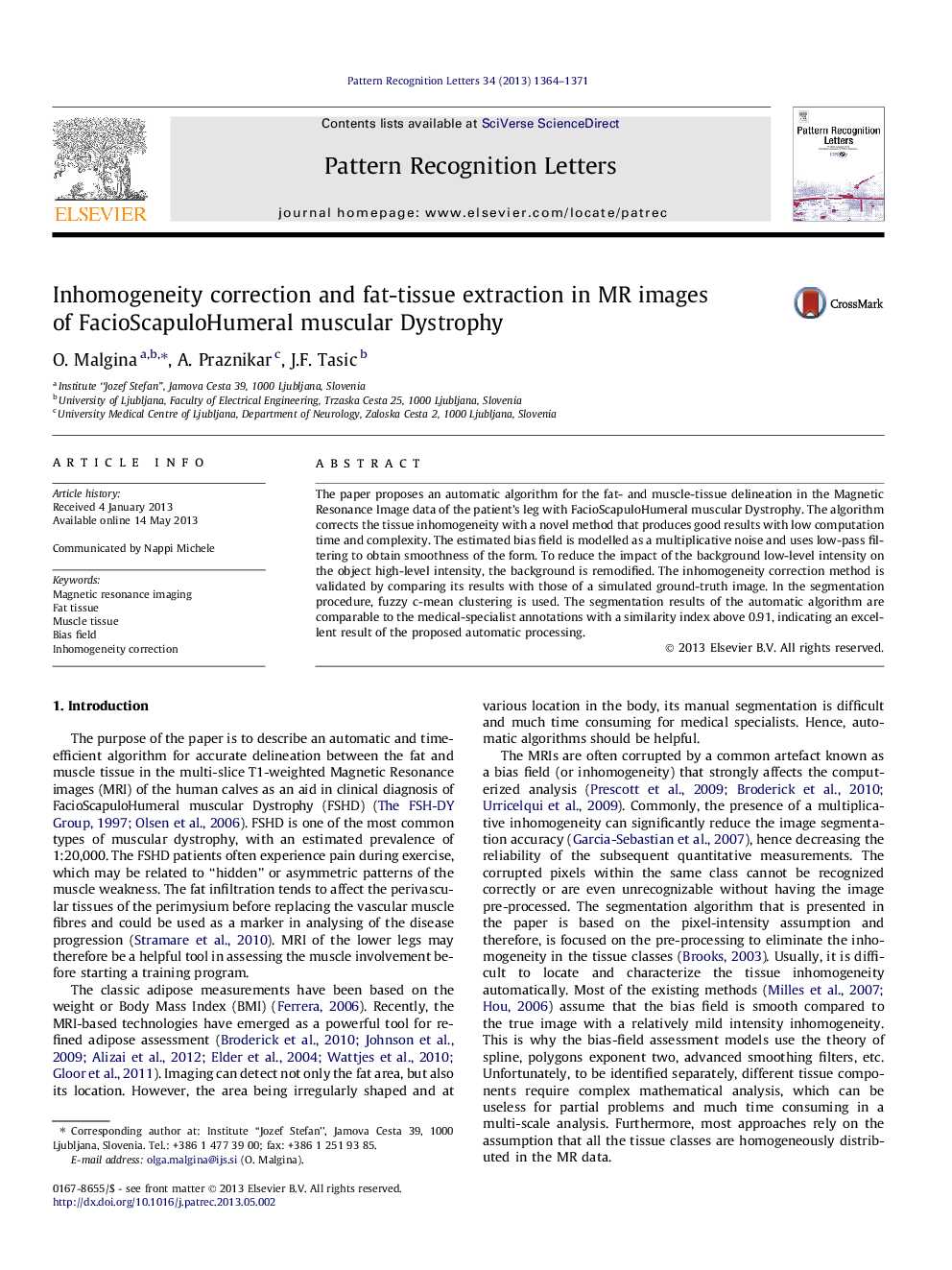| Article ID | Journal | Published Year | Pages | File Type |
|---|---|---|---|---|
| 533986 | Pattern Recognition Letters | 2013 | 8 Pages |
•An algorithm is illustrated for fat extraction from MRI of patients with FSHD.•The algorithm includes a novel method for inhomogeneity correction.•A proposed method was found to be the best solution for data correction.•The algorithm and manual segmentation results were found to be highly similar.
The paper proposes an automatic algorithm for the fat- and muscle-tissue delineation in the Magnetic Resonance Image data of the patient’s leg with FacioScapuloHumeral muscular Dystrophy. The algorithm corrects the tissue inhomogeneity with a novel method that produces good results with low computation time and complexity. The estimated bias field is modelled as a multiplicative noise and uses low-pass filtering to obtain smoothness of the form. To reduce the impact of the background low-level intensity on the object high-level intensity, the background is remodified. The inhomogeneity correction method is validated by comparing its results with those of a simulated ground-truth image. In the segmentation procedure, fuzzy c-mean clustering is used. The segmentation results of the automatic algorithm are comparable to the medical-specialist annotations with a similarity index above 0.91, indicating an excellent result of the proposed automatic processing.
